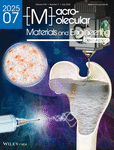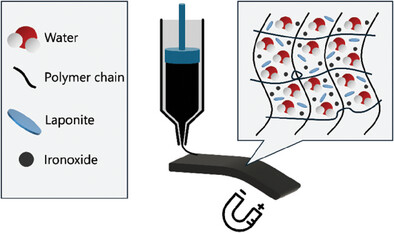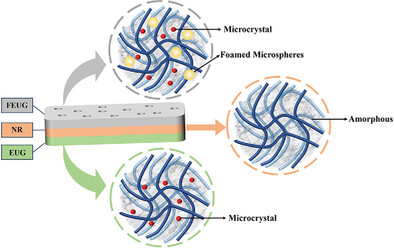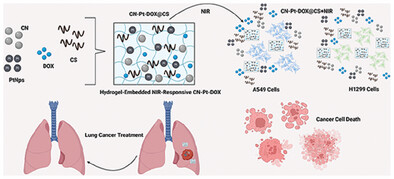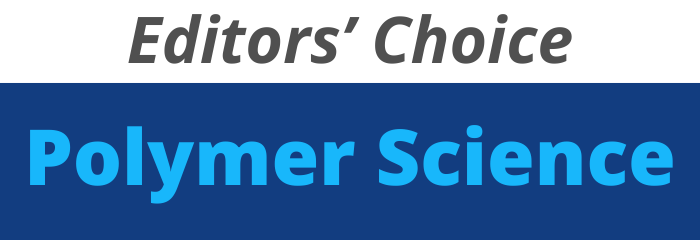Journal list menu
Export Citations
Download PDFs
Cover Picture
Nanofiber-Coated CF/PEEK Composite: Boosting Osteogenesis for Enhanced Bone Grafting
- First Published: 18 July 2025
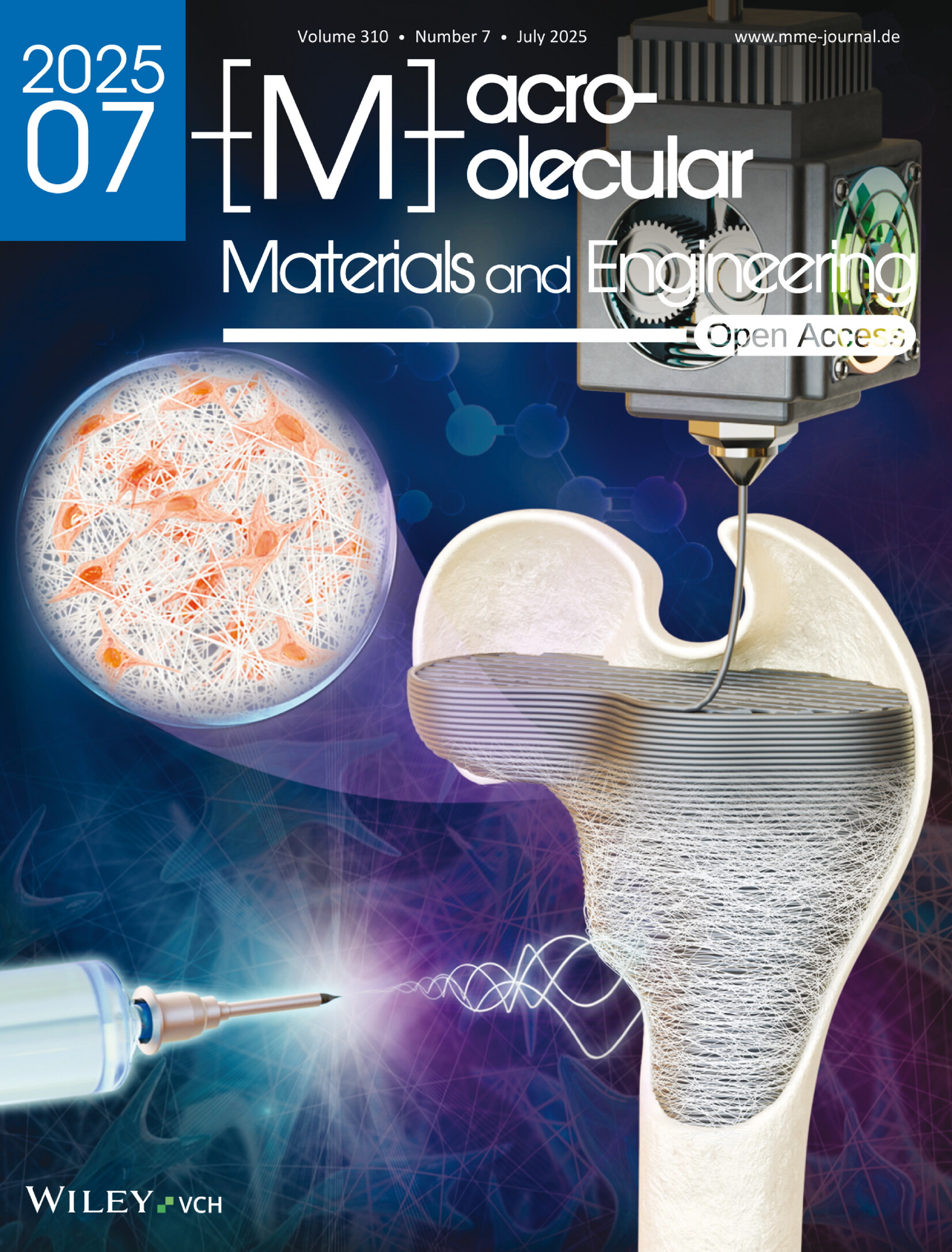
Front Cover: This illustration depicts the integration of 3D printing and electrospinning to fabricate nanofiber-coated scaffolds. Incorporating hydroxyapatite-loaded nanofibers significantly boosts osteogenesis, hydrophilicity, and cell compatibility. This multifunctional surface engineering strategy offers a powerful route toward next-generation bone graft substitutes with tailored mechanical strength, improved bioactivity, and enhanced osteogenesis. More details can be found in article 2400286 by Norbert Radacsi and co-workers.
Issue Information
Review
Recycling of Multilayer Polymeric Barrier Films: an Overview of Recent Pioneering Works and Main Challenges
- First Published: 16 April 2025
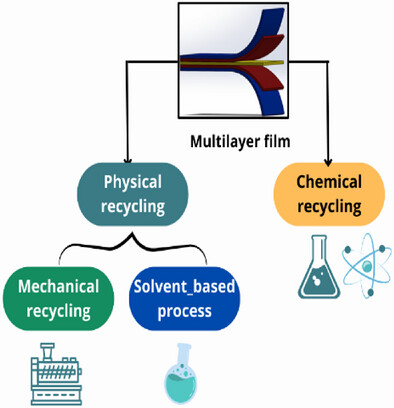
Multilayer barrier flexible polymer films, representing over 17% of global plastic packaging production, face recycling challenges due to complex compositions and strong interlayer adhesion. This image examines recycling methods, including mechanical recycling, delamination, selective dissolution-precipitation, and chemical recycling. Mechanical recycling is eco-friendly but limited by polymer degradation, while chemical methods offer high purity but are energy-intensive.
Thiol-X Chemistry: A Skeleton Key Unlocking Advanced Polymers in Additive Manufacturing
- First Published: 05 March 2025
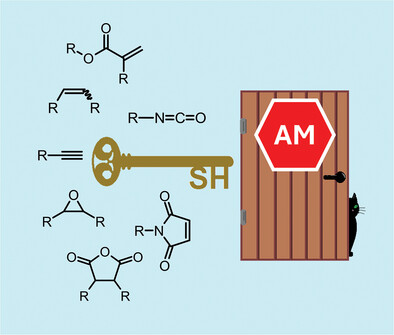
Additive manufacturing and thiol-X chemistry form a powerful combination for fabricating a diverse array of advanced polymers to address contemporary engineering applications. Thiol-X reactions offer versatile polymerization mechanisms, “click” reactivity, functional group tolerance, desirable properties, and compatibility over a broad range of 3D printing technologies. This review critically examines the synergy between thiol-X chemistry and additive manufacturing through structure-property-processing-performance relationships.
Research Article
Nanofiber-Coated CF/PEEK Composite: Boosting Osteogenesis for Enhanced Bone Grafting
- First Published: 30 October 2024
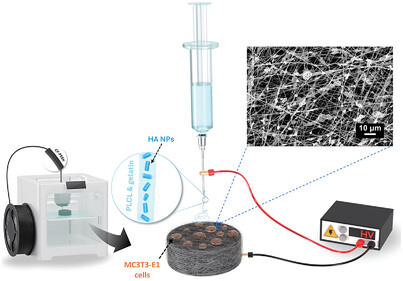
Carbon-fiber-reinforced polyetheretherketone (CF/PEEK) with micro-/nano-topographical structures on its surface is obtained by electrospinning hydrophilic fibers incorporating hydroxyapatite and gelatin onto 3D-printed CF/PEEK. This composite material promotes a significant increase in osteoblast mineralizing potential compared to non-coated implants. These fiber-coating modifications to CF/PEEK are a promising and important step forward in improving in vivo implant-bone osteointegration.
Effect of Cowpea Lignocellulosic Fibers as a Low-Value Reinforcing Filler on the Properties of Poly(butylene succinate-co-adipate) Bio-Composite Foams
- First Published: 05 March 2025
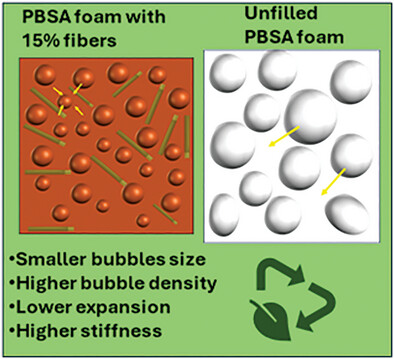
This study explores the effect of low-value cowpea lignocellulosic fibers as a reinforcing filler on the properties of PBSA-based foams. Fiber addition results in bio-composite foams with smaller bubble size, higher bubble density, with lower expansion ratio compared to unfilled PBSA foam. The stiffness of the bio-composite foams increases with fiber addition.
Kevlar/Basalt and Kevlar/Glass Intra-Ply Reinforced Hybrid Composites: Influence of Basket Weave Fabric Structure on Thermal Properties, Flammability, and Impact Performance
- First Published: 06 March 2025
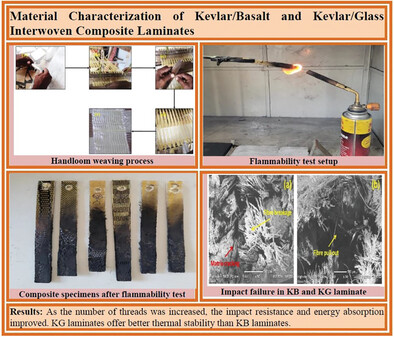
This research explores the effect of basket weave fabric structure and fiber combinations in hybrid composites, focusing on impact resistance, thermal stability, and flammability. The findings demonstrate that Kevlar-glass laminates offer superior thermal stability and impact strength compared to Kevlar-basalt laminates. Additionally, an increase in thread number enhances impact performance, while flame propagation rates remain unaffected. The self-extinguishing nature and HB rating of all laminates make them viable for high-performance applications.
Rapid Screening of Vapor Uptake by Ultra-Thin Polymer Films Using Surface Plasmon Resonance and Quartz Crystal Microbalance with Dissipation Monitoring
- First Published: 27 March 2025
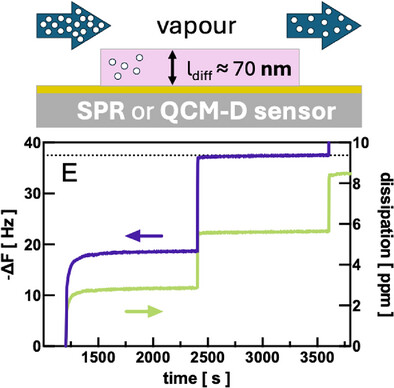
Polymer membranes separate volatile organic compounds (VOCs) from air in an energy-efficient manner. However, the screening for appropriate polymer materials is time and resource-consuming. QCM and SPR are presented as complementary rapid screening techniques that pave the way toward a scalable high-throughput system capable of significantly reducing the search for selective yet stable polymers for membrane vapor-gas separations.
3D Printable Magnetic Soft Actuators–Ink Formulation, Rheological Characterization, and Hydrogel Actuator Prototypes
- First Published: 05 March 2025
Optimizing Electrospun PVA Fibers with MXene Integration for Biomedical Applications
- First Published: 13 March 2025
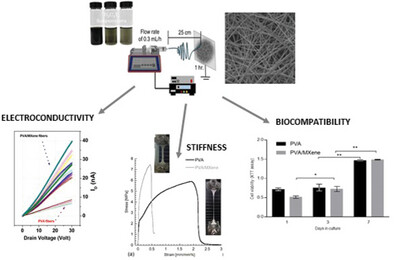
MXene flakes embedded in PVA electrospun fibers improve mechanical stiffness and electro-conductive properties, not negatively influencing the in vitro viability of L929 cells. These findings suggest the promising use of MXene-loaded nanofibers as innovative and highly versatile platforms for tissue engineering and biosensing applications.
Poly(Butylene Adipate-Co-Terephthalate)/Silane-Treated Wollastonite-Based Blown Film for Sustainable Packaging Application: Studying the Impact of Uniaxial Stretching on the Final Properties
- First Published: 07 April 2025

Poly(butylene adipate-co-terephthalate) (PBAT) films enhanced with silane-treated wollastonite (S-W) filler are innovatively developed using blown film extrusion followed by uniaxial stretching. This process led to remarkable improvements in the film's properties: tensile strength surged by ≈500%, and Young's modulus increased by 1000%. Additionally, barrier properties are enhanced by 42%. These advancements, driven by heightened crystallinity, position PBAT/S-W composites as a promising and eco-friendly alternative to single-use plastics, paving the way for a sustainable future in biodegradable packaging.
Eucommia Ulmoides Gum Soft-Hard Gradient Composite Materials with Shape Memory Property
- First Published: 20 February 2025
Fabrication of Carbon Nanodots/Platinum Functionalized Nanocomposite Hydrogel Formulation for Near-Infrared Responsive Delivery of Doxorubicin to Promote Necroptosis for Mitigating Lung Cancer Cells: In Vitro Photodynamic Therapy
- First Published: 26 March 2025
Light Based 3D Printable Photochromic WO3 Polymer Gel Nanocomposites for Heat Management and Decorative Applications
- First Published: 04 April 2025
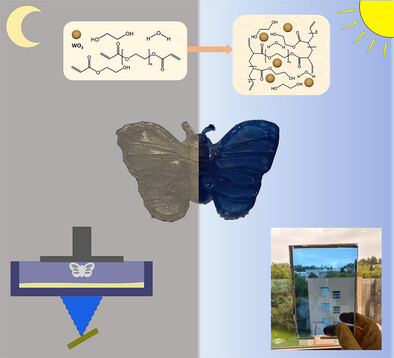
Photochromic gel nanocomposites with WO3 NPs have been prepared via photopolymerization. The photocurable resin consisting of WO3 NPs and acrylic monomers shows low viscosity and fast curation, allowing for light-based 3D printing. The photochromic gels show high transparency in their bleached state and high absorbance in their colored state, allowing for temperature modulation due to sunlight/UV light irradiation.
Sound-Insulation Performance of Polylactic Acid Parts 3D Printed by Fused Filament Fabrication with Functionally Graded Porous Structure for Effective Noise Reduction
- First Published: 08 March 2025
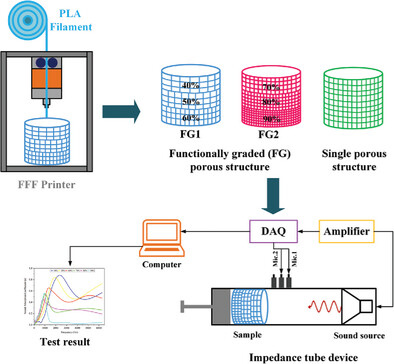
This study examines the sound absorption properties of fused filament fabrication (FFF) 3D-printed polylactic acid parts with functionally graded porous structures and controlled pore sizes. It analyzes the influence of infill densities on acoustic performance of printed parts. The findings provide insights into optimizing porous structures for effective noise reduction in additive manufacturing applications.
Innovative Thermosensitive Composite Materials: Merging Poloxamer PF-127 and Polysaccharides for Enhanced Functional Properties
- First Published: 08 April 2025
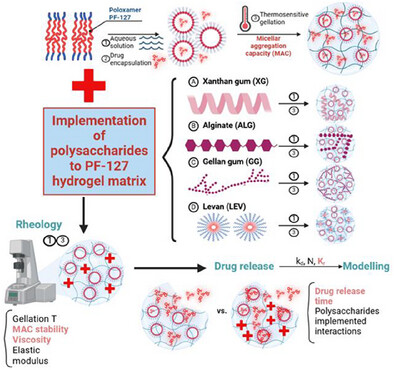
The poloxamer Pluronic-F-127-based hydrogels are improved by the implementation of polysaccharides with different concentration ranges and structural organizations. The interactions between the polysaccharide structures and the poloxamer micellar aggregation confer the system better rheological properties and longer drug release times explained by lower degradation rates and higher resistance against diffusion.
The Potential of Ruthenium(II) Tris-Bidentate Complexes as Multifunctional Photo-Initiators
- First Published: 09 April 2025
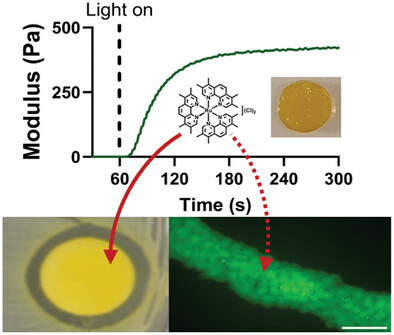
This study explores the use of an antibacterial ruthenium(II) based photo-initiator for the photo-polymerization of gelatin hydrogels. Antibacterial activity is shown to be retained in fabricated hydrogels. The photo-initiator is utilized in the interstitial fluid of a hybrid granular hydrogel system to generate a proof-of-concept injectable system for cell delivery.
Light-Driven Structural Detachment and Controlled Release in Smart Antibacterial Multilayer Platforms
- First Published: 08 March 2025
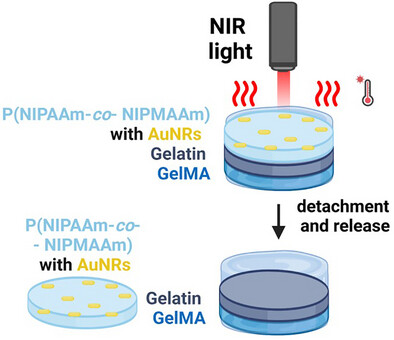
This study presents a multilayer system (MS) based on benzophenone-modified polydimethylsiloxane (PDMS) and a thermo-responsive core incorporating P(NIPAAm-co-NIPMAAm), gelatin, and gelatin methacrylate (GelMA). The photothermal properties of gold nanorods, together with the thermal sensitivity of hydrogel, enable controlled detachment and release of hydrogel under near-infrared (NIR) light irradiation, which activates bacterial eradication. MS shows a promising application for advanced smart materials and delivery systems.
Development of Flexible Polyacrylonitrile-Based Carbon Nanofibrous Yarns Through Optimization of Heat Treatment Processes
- First Published: 18 May 2025
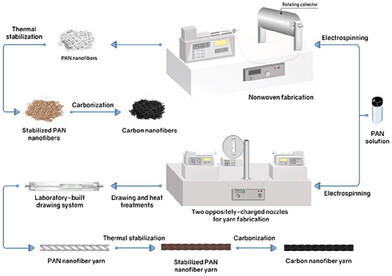
This study presents an optimized dual-nozzle electrospinning method for creating high-performance carbon nanofibrous yarns (CNY). Controlled tension during stabilization improves fiber alignment, boosting tensile strength by 659% and modulus by nearly 1000%. The low-temperature, scalable process enhances mechanical properties, ideal for wearable electronics, energy storage, and advanced composites.
Non-Porous Hydrogel Scaffolds for Locoregional Chemotherapy: A One-Pot Synthesis Approach
- First Published: 08 March 2025
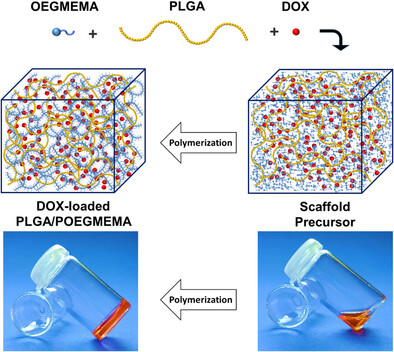
This hydrogel scaffold with tunable mechanical, water retention, degradation, and drug release properties is obtained by polymerizing the hydrophilic OEGMEMA monomer in the presence of PLGA and DOX under concentrated conditions. Its non-porous structure provides diffusion-based drug release, while extended drug release is possible by incorporating PLGA. The long-term degradation and drug release profiles support the suitability for locoregional chemotherapy.
Printable Elastic Porous Conductor for Stretchable Keypads
- First Published: 03 March 2025
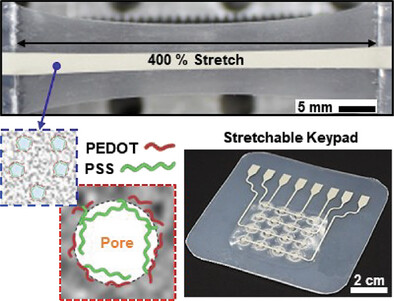
Highly stretchable and printable porous conductors are developed by incorporating PEDOT:PSS with silver flakes within a silicone rubber matrix. This elastic electrode retains high conductivity under 400% strain and endures 1000 stretching cycles. Its durability, cost-effectiveness, and scalability make it ideal for wearable electronics, as demonstrated by a stretchable keypad array with reliable performance.




